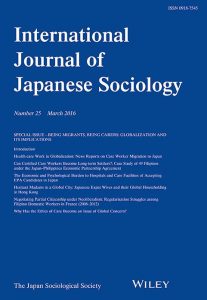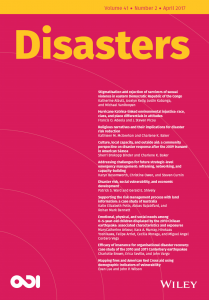Indigeneous Authenticity and Video Cameras
 Notions of authenticity and modernity are often challenged by indigenous groups. The Ya’kuana and the Sanema of Venezuela (see article below) use microphones to record birdsongs, the Yanomami of Brazil have learned how to use video equipment to document their own cultural traditions and ceremonies, and the Runakuna of the Peruvian Highlands adopt Western urban clothing in their ventures into the cities. Often with indigenous groups there is an underlying current of Edward Said’s Orientalism, the Other. The traditions, languages, clothing, and religions associated with indigenous groups are held to standards of authenticity and purity that surpass reality. There are critics both within and outside of indigenous groups that claim that the use of such technology or the adoption of non-indigenous clothing are signs of inauthenticity. These issues raise serious questions about when, where, and why and how we hold others to such strict measures. Further, what does it mean to be authentic and perhaps most importantly, why are technological advancements off-limits to particular populations?
Notions of authenticity and modernity are often challenged by indigenous groups. The Ya’kuana and the Sanema of Venezuela (see article below) use microphones to record birdsongs, the Yanomami of Brazil have learned how to use video equipment to document their own cultural traditions and ceremonies, and the Runakuna of the Peruvian Highlands adopt Western urban clothing in their ventures into the cities. Often with indigenous groups there is an underlying current of Edward Said’s Orientalism, the Other. The traditions, languages, clothing, and religions associated with indigenous groups are held to standards of authenticity and purity that surpass reality. There are critics both within and outside of indigenous groups that claim that the use of such technology or the adoption of non-indigenous clothing are signs of inauthenticity. These issues raise serious questions about when, where, and why and how we hold others to such strict measures. Further, what does it mean to be authentic and perhaps most importantly, why are technological advancements off-limits to particular populations?
Such a process of Othering reveals a deep pattern of Othering, a discriminatory symbolic dimension over the use and ownership of modernity and of the articulation of an identity.
NY Times, “Clinging to the Forest Despite Chaos”
Edward Said in the Blackwell Dictionary of Culture and Critical Theory






Great questions about authenticity and “other” populations. As you say, these are questions being asked within communities, too. They are very important from both an etic and emic perspective.
Keri